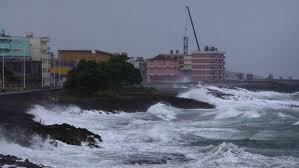The year 2017 rings in with many of us, all over the planet, resolving to do better.
- Get in better shape.
- Become more skilled and a better co-worker on the job.
- Be more altruistic and a better member of society.
As a planet, becoming better stewards of clean water can be added to this list. But what can we do?
The City of Bellevue, WA, offers terrific suggestions to its residents for reducing contamination to surface water. Pollution from cities like Bellevue is called point pollution, as described below in an excerpt from the Environment Protection Agency (EPA) site:
The term “point source” means any discernible, confined and discrete conveyance, including but not limited to any pipe, ditch, channel, tunnel, conduit, well, discrete fissure, container, rolling stock, concentrated animal feeding operation, or vessel or other floating craft, from which pollutants are or may be discharged.
Importantly, point pollution does not include agricultural storm water discharges and return flows from irrigated agriculture. Otherwise known as farm runoff.

Point pollution, often to the surprise of many, also does not account for the vast majority of surface water pollution across the USA and elsewhere. That responsibility lies with agriculture, and farm runoff.
In this 2014 Scientific American article, Lake Erie Basin farm fields are cited as being responsible for at least 60% of the phosphorus now reaching Lake Erie. Phosphorus is the key nutrient feeding the epic algae blooms occurring annually in the lake. This 60% figure is tossed around regularly — in many places the percentage is as high as 80% — wherever and whenever agriculture, algae blooms and phosphorus are discussed.
So, in addition to what Bellevue, WA suggests we as individuals can do to foster clean surface water, let’s encourage agriculture to resolve to follow some guidelines for the new year as well. Priority areas noted below, and the specific practices recommended, come from the Environmental Protection Agency’s guide: National Management Measures to Control Non-point Source Pollution from Agriculture.
Conservation Tillage – leaving crop residue (plant materials from past harvests) on the soil surface reduces runoff and soil erosion, conserves soil moisture, helps keep nutrients and pesticides on the field, and improves soil, water, and air quality;
Crop Nutrient Management – fully managing and accounting for all nutrient inputs helps ensure nutrients are available to meet crop needs while reducing nutrient movements off fields. It also helps prevent excessive buildup in soils and helps protect air quality;
Pest Management – varied methods for keeping insects, weeds, disease, and other pests below economically harmful levels while protecting soil, water, and air quality;
Conservation Buffers – from simple grassed waterways to riparian areas, buffers provide an additional barrier of protection by capturing potential pollutants that might otherwise move into surface waters.
Strategic Irrigation Water Management – reducing non-point source pollution of ground and surface waters caused by irrigation systems;
Grazing Management – minimizing the water quality impacts of grazing and browsing activities on pasture and range lands;
Animal Feeding Operations (AFOs) Management – minimizing impacts of animal feeding operations and waste discharges through runoff controls, waste storage, waste utilization, and nutrient management;
Erosion and Sediment Control – conserving soil and reducing the mass of sediment reaching a water body, protecting both agricultural land and water quality and habitat.
The new year has arrived. Here’s hoping it will be a good one for everyone — starting with the water we share.



